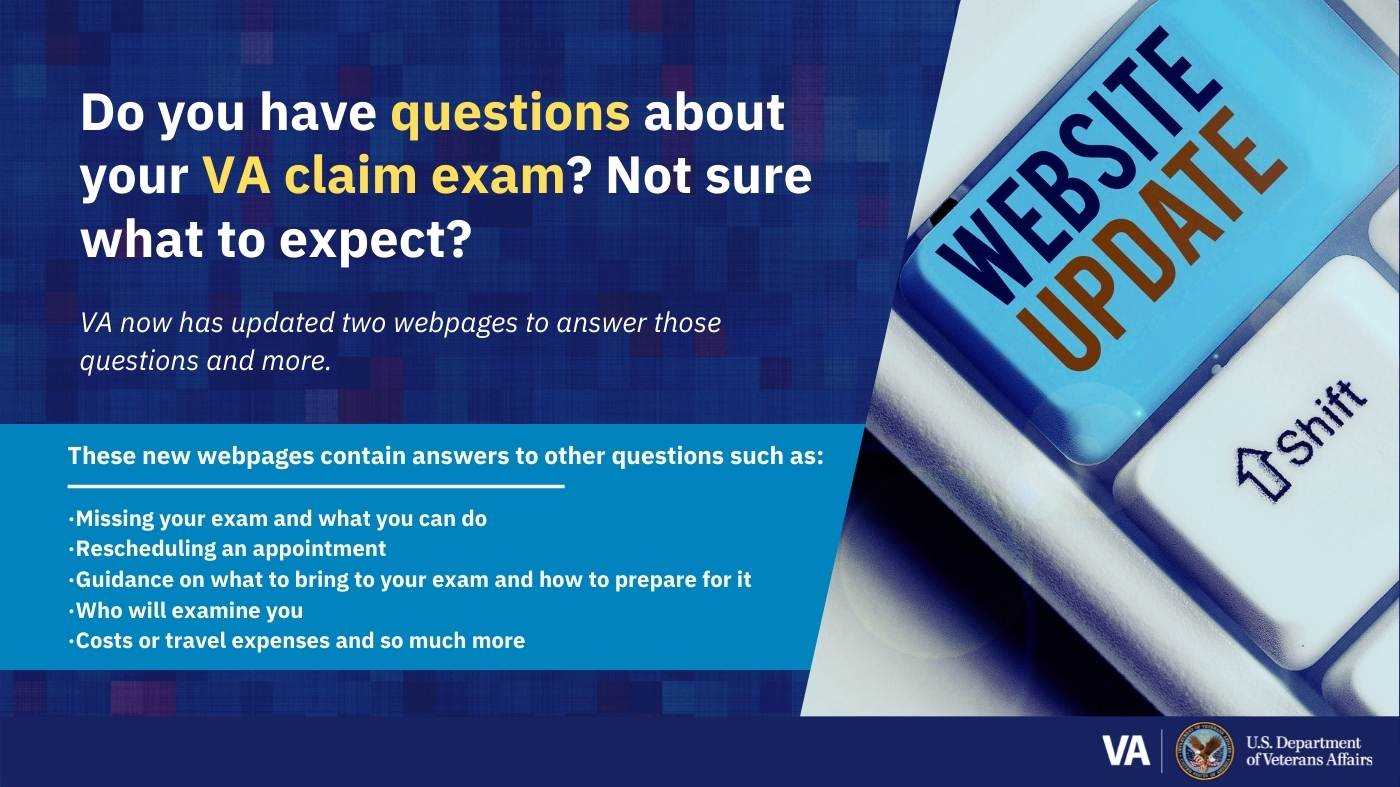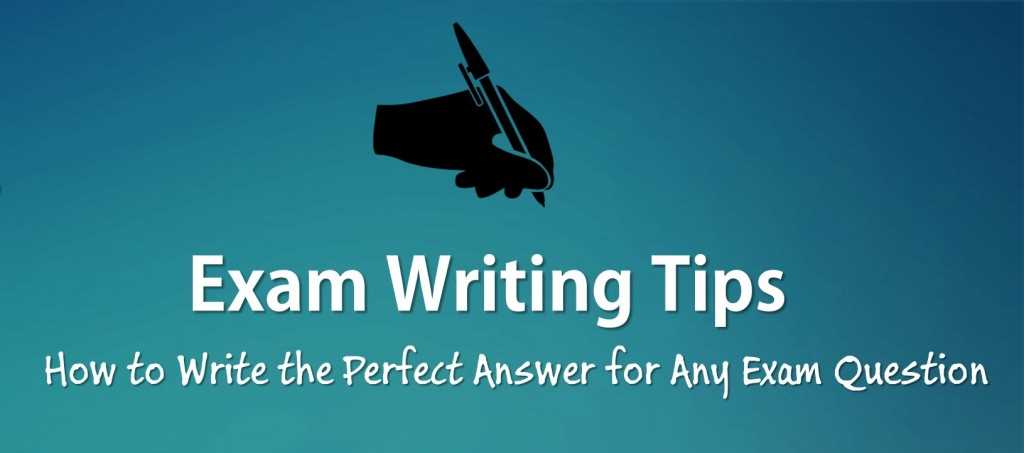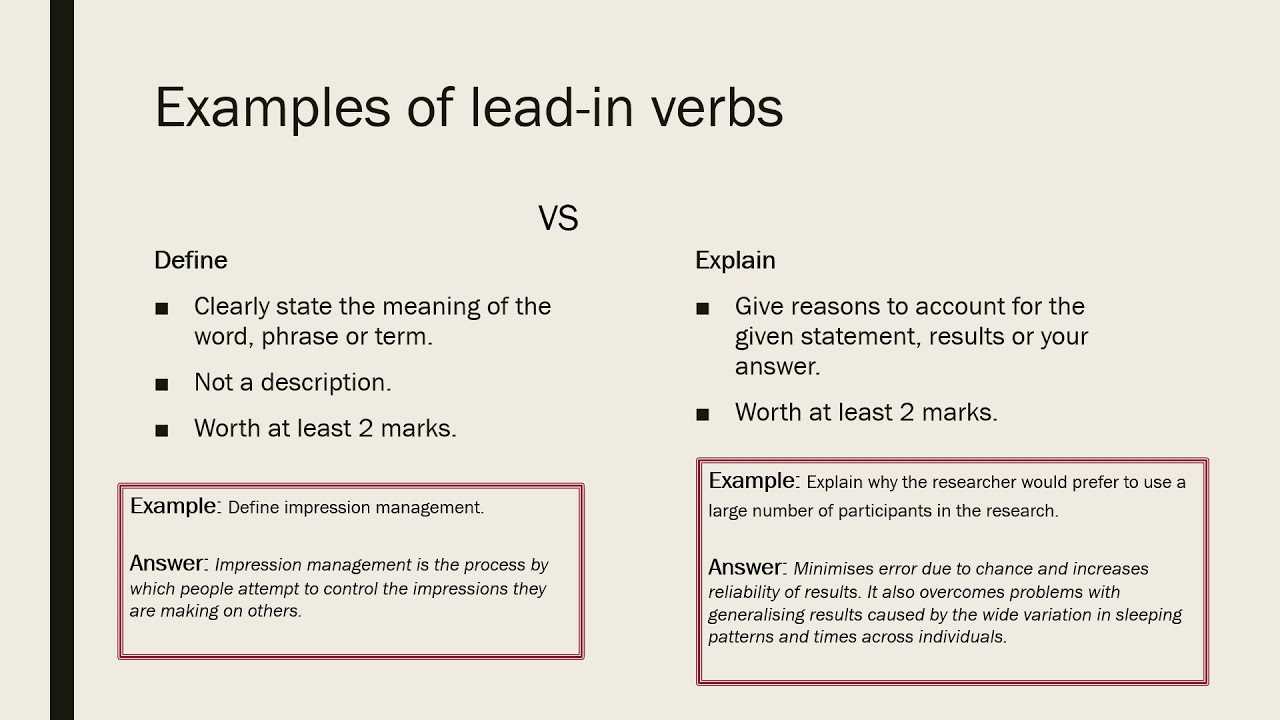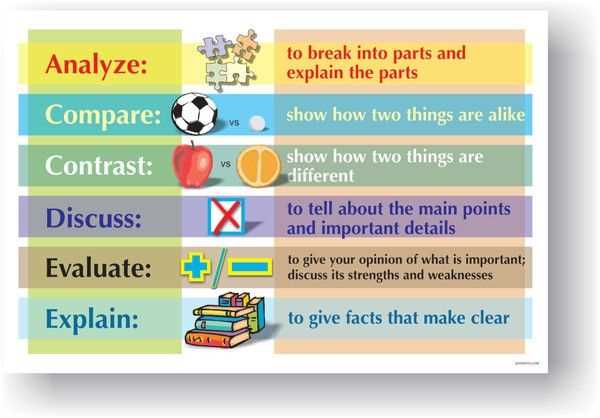
Preparing to demonstrate your knowledge in a timed setting requires both strategy and confidence. The ability to provide well-structured and relevant solutions is a critical skill that can be developed with proper techniques. Understanding what is expected and delivering clear, concise content plays a vital role in achieving success.
Each assessment scenario presents unique challenges. From interpreting prompts accurately to organizing thoughts efficiently, the process involves more than just recalling information. By developing methods tailored to various formats and question types, you can enhance your ability to communicate your understanding effectively.
This guide explores essential practices for interpreting prompts, organizing responses, and presenting ideas in a clear and impactful manner. Through these strategies, you can refine your approach and confidently tackle even the most challenging tasks.
How to Answer Exam Questions
Effectively responding to assessment prompts requires a blend of clarity, organization, and understanding. Mastering this skill ensures that you can present your knowledge in the most coherent and persuasive way possible, even under time pressure. The key to success lies in interpreting each task correctly and structuring your thoughts in a logical, concise manner.
To begin, always take a moment to carefully analyze what is being asked. This initial step allows you to focus your response on the most relevant information and avoid common pitfalls. Once you have understood the prompt, organizing your thoughts becomes crucial for delivering a clear and concise reply.
The table below highlights some essential strategies for crafting effective responses:
| Step | Action | Benefit |
|---|---|---|
| 1 | Read the prompt thoroughly | Ensures understanding of the task |
| 2 | Highlight key terms | Focuses your response on important aspects |
| 3 | Organize your thoughts before writing | Improves clarity and flow of ideas |
| 4 | Support your points with relevant examples | Strengthens your argument and shows depth |
| 5 | Review your response | Helps identify and correct mistakes |
By applying these steps, you will be able to respond effectively and showcase your knowledge in the most structured and clear way possible.
Understand the Question Before Answering
Before attempting to formulate a response, it is essential to fully comprehend what is being asked. Taking time to interpret the task correctly ensures that your reply is both relevant and precise. Misunderstanding the prompt can lead to wasting time or addressing the wrong aspects, which can negatively impact your performance.
Focus on identifying key instructions and specific requirements within the task. Often, prompts contain crucial details that direct the scope and depth of your response. By carefully noting these elements, you can ensure that your content directly aligns with what is expected.
Additionally, if you encounter unfamiliar terms or concepts, take a moment to clarify their meaning before proceeding. This ensures that you approach the problem with a solid understanding and avoid any confusion that might hinder the quality of your response.
Read Instructions Carefully for Clarity
One of the most crucial steps before starting to write is to thoroughly review the given guidelines. These directives often contain essential details that can significantly shape the way you approach the task. Neglecting to fully understand them can lead to errors, irrelevant content, or incomplete responses.
Make sure to read each instruction at least twice to ensure that no important information is overlooked. Pay attention to specific words such as “list,” “describe,” or “explain,” as they indicate the type of response required. These subtleties guide you on whether to provide detailed explanations, brief answers, or examples.
Focus on Key Phrases
Key phrases within the prompt are designed to guide your focus. Understanding them helps you avoid unnecessary digressions and stay on track. For instance, if asked to “compare,” focus on highlighting similarities and differences, rather than providing a general overview.
Clarify Any Uncertainties
If you find any part of the instructions unclear, don’t hesitate to clarify. It’s better to ask for guidance or make an educated assumption than to proceed with an incorrect interpretation. This ensures that your response is aligned with what the task requires.
Plan Your Time During the Test
Effective time management is key to maximizing your performance in any timed assessment. Without a clear plan, it’s easy to get caught up in one section and run out of time for others. By allocating your time wisely and sticking to a schedule, you ensure that each part of the task receives the attention it requires.
Before you begin, take a moment to quickly review the entire test. This initial scan helps you gauge the difficulty and length of each section, so you can make informed decisions on how to divide your time. Setting realistic time goals for each part of the task is crucial to avoid rushing through any section at the last minute.
Set Time Limits for Each Section
Breaking the task into smaller segments and assigning a specific time limit for each can help you stay on track. Consider the following approach:
- Allocate more time to sections that require detailed responses.
- Spend less time on multiple-choice or short-answer questions.
- Leave a few minutes at the end for review.
Monitor Your Progress

Regularly check the time to ensure you’re sticking to your plan. If you find yourself spending too much time on one part, move on to the next and return to the difficult sections if time permits. This way, you ensure that every aspect of the task is completed.
Highlight Key Terms in the Question
Identifying and emphasizing important words in the task prompt is essential for providing a relevant and focused response. These key terms help to clarify what is being asked and guide your approach to the solution. By recognizing these phrases, you can avoid unnecessary detours and ensure your response directly addresses the required points.
When reading through the prompt, take a moment to underline or mentally highlight the significant instructions. Look for action verbs and phrases that indicate the nature of the response, such as “compare,” “describe,” “analyze,” or “evaluate.” These words provide essential clues on how to structure your reply.
Focus on Action Words
Action words are typically the most important terms to highlight, as they define the approach you should take in your response. Some common action words include:
- Compare: Highlight similarities and differences.
- Explain: Provide clear and detailed reasoning.
- Evaluate: Assess the strengths and weaknesses.
- Discuss: Present an argument with evidence.
Identify Contextual Clues
Look for contextual clues that specify the scope or focus of the task. Terms like “briefly,” “in detail,” or “within the scope of” can help you gauge how comprehensive your response should be. This ensures that you don’t over- or under-explain, sticking to the appropriate depth based on what is asked.
Break Down Complex Questions Step by Step
When faced with a challenging task, it’s important to break it into manageable parts. Complex prompts can feel overwhelming at first glance, but by dividing them into smaller, more digestible elements, you can approach each part methodically and provide a clear, structured response. This approach prevents you from feeling lost and ensures that each component is addressed fully.
Start by carefully reading the prompt and identifying multiple layers or sub-tasks. Often, a difficult task involves several questions or requires multiple points to be covered. By outlining these points, you can systematically address them one by one, ensuring thoroughness without missing key details.
Steps to Break Down a Complex Task
Follow these steps to simplify the process and ensure clarity in your response:
- Identify key components: Look for distinct parts within the prompt that ask for separate responses.
- Prioritize tasks: Determine the order in which you should tackle each component based on importance or logical sequence.
- Plan your response: Create a brief outline or bullet points to guide you through each section.
- Address one point at a time: Focus on providing a clear and concise response to each part before moving on to the next.
Example of Breaking Down a Complex Task
Consider a prompt that asks you to compare two historical events, analyze their causes, and evaluate their impacts. You can break it down as follows:
- Compare: List the similarities and differences between the two events.
- Analyze Causes: Examine the factors that led to each event.
- Evaluate Impacts: Assess the short-term and long-term consequences of each event.
By approaching the task step by step, you ensure that no part of the prompt is overlooked and that your response is organized and coherent.
Use Clear and Concise Language
Expressing your thoughts clearly and efficiently is vital in a timed assessment. Overly complex or wordy responses can confuse the reader and detract from the main points you wish to convey. By focusing on clarity and brevity, you ensure that your message is understood and your ideas are presented in the best possible way.
Avoid long-winded explanations and unnecessary details. Instead, aim to be direct and to the point, ensuring that every sentence serves a purpose. This approach not only improves the readability of your response but also helps you manage your time more effectively, as you won’t waste words on irrelevant content.
Tips for Using Clear Language
- Use simple words: Choose straightforward language over jargon or overly technical terms unless specified.
- Avoid repetition: Don’t restate the same idea multiple times unless it adds clarity.
- Be specific: Provide exact details and avoid vague statements that could be misinterpreted.
- Keep sentences short: Aim for clear, concise sentences that are easy to follow.
Examples of Concise Responses
Instead of writing:
"The reason for the Industrial Revolution was mainly due to a combination of technological advancements, social changes, and economic factors that all contributed to the transformation of the way people lived and worked during that time."
Write:
"The Industrial Revolution was driven by technological advancements, social changes, and economic factors."
By using clear and concise language, you ensure that your message is delivered effectively, and your response remains focused and relevant. This approach not only saves time but also enhances the overall quality of your work.
Stay Focused on the Main Topic
Maintaining focus on the core subject of the task is essential for crafting a strong response. It’s easy to get sidetracked by peripheral details or unrelated information, but doing so can dilute the quality of your answer. By staying on topic, you ensure that your response remains relevant and addresses what is specifically being asked.
Always refer back to the prompt to remind yourself of the key points. If you find yourself drifting into irrelevant territory, pause and refocus. Striving for clarity and precision will help you provide a more effective and concise response.
Tips to Stay on Track

- Understand the task: Take time to fully grasp what is being asked before you begin.
- Stick to the point: Avoid introducing unnecessary details or ideas that are not directly related to the prompt.
- Check your work: Periodically review your response to ensure it aligns with the original question.
- Stay concise: Focus on delivering a direct response without veering off into unrelated areas.
Avoid Common Distractions
- Over-explaining: Don’t add excessive explanations unless specifically asked.
- Off-topic information: Resist the urge to include facts or ideas that aren’t required to address the main topic.
- Generalizations: Avoid vague or overly broad statements that don’t directly answer the prompt.
By keeping your response tightly aligned with the subject at hand, you ensure that your answer is relevant, well-structured, and clear. Staying focused will also help you manage your time more effectively, allowing for a more complete and organized response.
Answer What Is Asked, Not More
When responding to a task, it’s important to address only the points that are specifically requested. While it may be tempting to provide extra information or offer a more detailed explanation, doing so can lead to irrelevant content that detracts from the clarity of your response. By focusing strictly on what is asked, you ensure that your reply is concise, relevant, and directly aligned with the task at hand.
Straying from the main requirements can cause your response to become disorganized and may lead to misunderstandings. Stay within the boundaries of the prompt, and avoid going beyond what is necessary. This allows you to provide a more structured, focused, and precise reply, ultimately improving the quality of your work.
Strategies for Staying Focused
- Read carefully: Fully understand the task before starting to write to avoid misinterpretation.
- Identify key instructions: Highlight or note the specific aspects of the task that need to be addressed.
- Stick to the required length: If the prompt specifies a word count or limits the scope, adhere to those guidelines.
- Resist over-explaining: Stick to the essentials and avoid adding additional explanations that aren’t needed.
By sticking to the essentials, you not only maintain focus but also ensure that your response remains efficient and relevant, saving time and effort for both you and the reader.
Use Examples to Support Your Answer
Incorporating specific examples into your response can significantly strengthen your argument and demonstrate a deeper understanding of the topic. Examples provide clarity by illustrating how theoretical concepts apply in real-world contexts. They make your response more convincing and show that you can not only grasp abstract ideas but also apply them practically.
When including examples, choose ones that are directly relevant and help to reinforce the point you are making. This adds depth to your response, making it more comprehensive and easier for the reader to follow.
Why Examples Are Important
- Clarification: Examples simplify complex ideas and make them more relatable.
- Relevance: They show that you understand the key concepts and can apply them appropriately.
- Strengthen Argument: Real-life examples add credibility to your claims and help to persuade the reader.
How to Choose the Right Example

- Keep it relevant: Make sure the example directly supports the point you’re making.
- Be specific: Use concrete details rather than vague references.
- Be concise: Avoid over-explaining the example–keep it short and to the point.
By thoughtfully incorporating examples, you not only clarify your response but also make it more persuasive, ensuring that your ideas are well-supported and easily understood.
Structure Your Response Logically
A well-organized response helps convey your ideas more effectively and ensures clarity for the reader. When your points follow a clear and logical order, it becomes easier for the reader to understand your thought process and the connections between your ideas. This structure not only enhances readability but also strengthens your argument by presenting it in a coherent, step-by-step manner.
By using a logical framework, you create a smooth flow of information that guides the reader from one point to the next. This approach makes your response easier to follow and more persuasive. Without clear structure, even strong content can seem disjointed or difficult to interpret.
Steps to Achieve Logical Structure
- Begin with a clear introduction: Set the stage by outlining the main points that will be addressed.
- Organize points in a sequence: Arrange your arguments or facts in a natural order–chronological, cause and effect, or from general to specific.
- Use paragraphs effectively: Each paragraph should focus on one main idea, and each should build upon the previous one.
- Conclude clearly: Summarize the key points and emphasize the main takeaway without introducing new information.
By structuring your response with a clear beginning, middle, and end, you help the reader easily follow your argument and increase the impact of your response.
Manage Your Stress During Exams
Feeling stressed during a high-pressure situation is natural, but learning how to manage it can improve performance and clarity. Stress can cloud your thinking, hinder your focus, and make it difficult to organize your thoughts. However, with the right techniques, you can reduce anxiety and approach tasks with a clear and calm mindset. This will not only enhance your efficiency but also help maintain your well-being.
Developing stress management strategies before and during the test can lead to better concentration and prevent panic. From deep breathing exercises to time management skills, there are several methods you can use to stay focused and calm under pressure. Understanding how stress affects you personally and knowing how to control it is key to performing at your best.
Effective Stress Management Techniques
- Practice deep breathing: Slow, deep breaths can help reduce tension and bring focus to the task at hand.
- Take short breaks: If you feel overwhelmed, pause for a few seconds to relax and reset your mind.
- Stay positive: Encourage yourself with positive affirmations and avoid negative self-talk.
- Focus on one task at a time: Trying to multitask can increase stress–stay present with each step.
Prepare Mentally Before the Test
- Get adequate rest: A well-rested mind performs better under pressure.
- Plan ahead: Organize your study schedule to avoid last-minute cramming and reduce unnecessary stress.
- Visualize success: Picture yourself managing the task calmly, which can boost confidence.
By integrating these stress management techniques, you will not only maintain your composure but also increase your ability to think clearly and perform efficiently.
Review Your Response Before Submitting
Taking the time to review your work before final submission is crucial for ensuring accuracy and completeness. Often, we may overlook simple errors or miss out on key points when rushing to finish. A final check allows you to catch mistakes, refine your arguments, and ensure that your work reflects the best of your abilities. Even if you feel confident, a quick review can make a significant difference in the quality of your submission.
By reviewing, you can identify areas where your response may need further clarity or additional information. It also provides an opportunity to verify that you have followed all instructions and addressed every part of the task. This step adds an extra layer of assurance that your work is polished and coherent before you submit it.
Steps for an Effective Review
- Check for clarity: Make sure your points are well-articulated and easy to follow.
- Proofread for grammar and spelling: Typos or grammatical errors can affect the professionalism of your work.
- Verify completeness: Ensure that all aspects of the task have been addressed comprehensively.
- Cross-check instructions: Confirm that you have followed all guidelines and requirements as per the task.
Key Areas to Focus On
- Structure: Make sure your response has a clear and logical flow, from introduction to conclusion.
- Accuracy: Review your facts, calculations, or data to avoid any mistakes.
- Relevance: Ensure each part of your response directly addresses the prompt and does not stray off-topic.
By carefully reviewing your work, you maximize your chances of submitting a well-rounded, accurate, and high-quality response. It’s a small step that can lead to big improvements in your overall performance.
Write Neatly for Better Readability
Clear and legible handwriting is essential for effectively conveying your thoughts and ideas. When your work is messy or difficult to read, it can create confusion and even lead to misinterpretation of your points. Whether it’s handwritten or typed, the neatness of your response plays a significant role in how easily it can be understood. Ensuring your writing is organized and legible will not only make your work easier to read but also leave a positive impression on those assessing it.
Neatness in your response shows that you care about presenting your ideas clearly. It helps examiners or readers focus on the content of your work rather than struggling to decipher unclear handwriting or poorly formatted text. Taking extra care to write neatly ensures that your ideas are communicated effectively, without distractions.
Tips for Clear Handwriting
- Maintain consistent spacing: Leave adequate space between words and lines to avoid overcrowding and ensure clarity.
- Use legible fonts: If typing, select a clean, readable font and avoid excessive formatting that may make the text hard to read.
- Write in a straight line: Whether by hand or on a computer, ensure your text aligns properly to avoid visual confusion.
- Keep your writing consistent: Stick to one style of handwriting or font throughout to maintain uniformity.
Formatting Tips for Better Readability
- Use paragraphs: Break your work into short, digestible sections to guide the reader through your response.
- Use bullet points or lists: Organizing key points in a list format can help highlight important information and make your answer easier to follow.
- Limit distractions: Avoid overuse of colors, fonts, or underlining. Keep the layout simple and focused on clarity.
By making sure your handwriting or typing is neat and well-organized, you significantly improve the likelihood that your message is clearly understood. This small effort can make a big difference in how your response is perceived and evaluated.
Don’t Leave Questions Unanswered
It’s tempting to skip over a difficult section or leave a blank if you’re unsure of the correct response. However, leaving items incomplete can negatively impact your performance. Even if you don’t have the perfect answer, providing something is always better than submitting nothing. Often, partial responses can earn you partial credit, which might make the difference between passing or failing.
In many cases, an unanswered question suggests a lack of effort or preparation, which could be penalized. On the other hand, making an attempt, even if imperfect, shows your engagement with the material and your willingness to try. This effort could be appreciated by evaluators, who are more likely to reward your attempt than penalize it entirely.
Reasons to Always Attempt Every Item
- Maximize your chances of scoring: Even a partial response can earn credit if it demonstrates understanding of the topic.
- Avoid penalties: In many formats, leaving something blank can result in automatic zeroes for that item.
- Showcase your thought process: Even an imperfect response can reveal your thought process, which might be valuable to the evaluator.
Strategies for Tackling Difficult Items
| Strategy | Description |
|---|---|
| Make an educated guess | If you’re unsure, take a reasonable guess based on what you know. Narrow down your options before selecting. |
| Write down key points | For essay-type responses, jot down the main ideas or concepts you remember before organizing them into a structured response. |
| Leave a placeholder | If stuck, put a simple note like “I will return to this” to remind yourself to revisit it later. |
Remember, doing something is always more beneficial than doing nothing. Even if you don’t have all the answers, showing your reasoning and effort can help you secure better results. Make it a habit to attempt every item and keep pushing forward, regardless of how difficult the task may seem at first.
Use Bullet Points for Clarity
When responding to tasks that require listing information, using bullet points can help organize your thoughts and present them in a more readable way. This format allows you to break down complex ideas into simpler, digestible pieces, making it easier for the evaluator to follow your reasoning. Bullet points highlight key concepts and ensure that each point is distinct, which improves the clarity of your response.
In addition to providing structure, bullet points can save you time. Instead of writing long paragraphs, you can convey important details quickly and concisely. This is especially useful when you need to address multiple points or steps in a process. The straightforwardness of bullet points also reduces the chance of overlooking crucial information.
Benefits of Using Bullet Points
- Improves readability: Bullet points separate ideas, making it easier for the reader to understand the key points.
- Enhances organization: Helps you present your thoughts in a logical and structured manner, avoiding confusion.
- Saves time: Allows you to convey important details quickly without unnecessary elaboration.
- Highlights important information: Emphasizes each item, making it more likely that key points will stand out to the evaluator.
Whether it’s listing facts, steps in a process, or key characteristics, bullet points help to keep your response concise, focused, and easy to follow. They make sure that your answer is well-organized and allows the evaluator to quickly assess your knowledge without having to sift through long paragraphs.
Practice with Past Exam Papers
Reviewing previous assessments is a valuable method to prepare for upcoming tests. By practicing with past materials, you can familiarize yourself with the format, style, and structure of the tasks you may encounter. This process allows you to get a sense of the most common topics and the type of questions or challenges that are frequently posed. Additionally, it helps to refine your ability to manage time efficiently during the actual test.
Practicing with past papers enables you to identify patterns in the way questions are structured and how to approach them effectively. It also provides an opportunity to gauge your knowledge and identify areas where more focus is needed. Repeated practice not only increases confidence but also improves speed and accuracy, which is crucial during the limited time available in a test environment.
Benefits of Practicing with Past Papers

- Familiarity with format: Helps you understand how tasks are presented and what to expect during the actual assessment.
- Time management: Enhances your ability to allocate time wisely across different sections or questions.
- Identifying patterns: Enables you to recognize recurring themes or types of questions, allowing for better-targeted preparation.
- Building confidence: Regular practice reduces anxiety and boosts your self-assurance in your ability to perform well.
Tips for Using Past Papers Effectively
| Tip | Description |
|---|---|
| Simulate real conditions | Take the practice test under timed conditions to replicate the pressure of the actual test day. |
| Review answers thoroughly | After completing a past paper, go through your responses in detail and understand where you went wrong or could improve. |
| Focus on weak areas | Use past papers to identify the areas where you struggle the most and prioritize studying those topics. |
By consistently working through past papers, you can develop a deeper understanding of the test’s expectations, improve your response strategies, and approach each task with greater assurance. It serves as an essential tool for refining your skills and enhancing overall performance.
Stay Calm and Confident in Your Response
Maintaining a calm and composed mindset during any assessment is essential for delivering clear and accurate responses. Anxiety can cloud your thinking, making it difficult to focus and perform at your best. By staying confident, you allow your preparation and knowledge to shine through, even under pressure. A clear mind is the foundation of effective problem-solving and thoughtful expression, ensuring that you provide the most precise and well-structured reply possible.
Confidence does not come from memorizing every detail but from trusting your abilities and knowing that you are well-prepared. When you approach each section with a steady mind, you are better equipped to tackle even the most complex tasks. Moreover, confidence allows you to manage your time wisely and avoid getting stuck on difficult parts for too long. Understanding that every response doesn’t need to be perfect helps you maintain a sense of control and stay focused on providing the best possible solution within the given timeframe.
Strategies to Maintain Calm and Confidence
- Practice deep breathing: Take slow, deep breaths to relax your mind and body before starting.
- Positive self-talk: Remind yourself of your preparation and past successes to build confidence.
- Break tasks into smaller parts: Tackle each challenge step-by-step to avoid feeling overwhelmed.
- Trust your instincts: Rely on the knowledge and techniques you’ve developed through preparation.
Common Pitfalls to Avoid
| Pitfall | Solution |
|---|---|
| Overthinking | Stay focused on the task at hand and avoid second-guessing yourself too much. |
| Rushing | Take the time to read each task carefully and plan your response before diving in. |
| Allowing distractions | Keep distractions at bay by concentrating solely on the task and blocking out external noise. |
By staying calm and confident, you can approach each challenge with clarity and efficiency. The more you practice these techniques, the easier it becomes to trust yourself and handle any task, no matter how difficult it may seem at first.